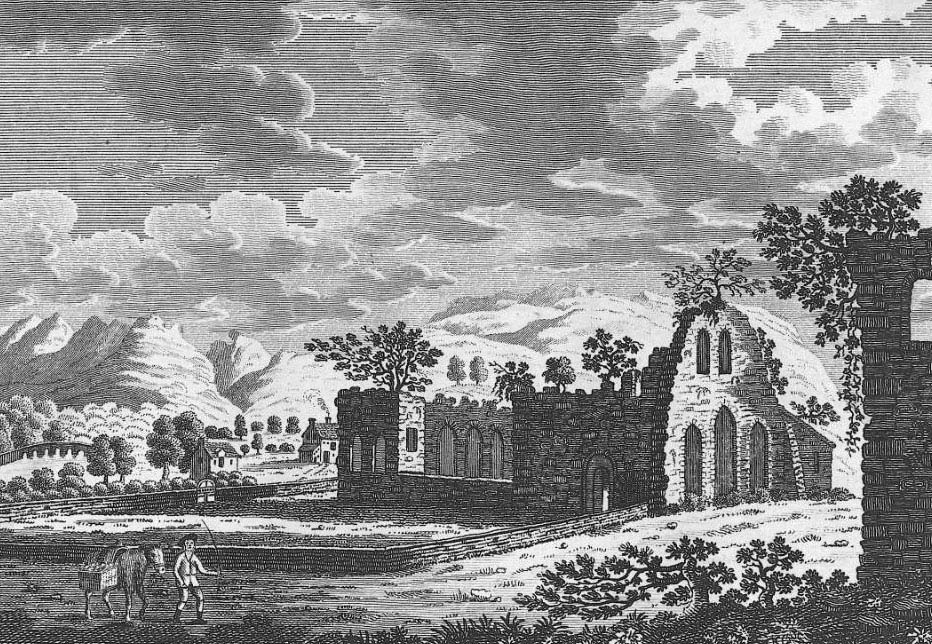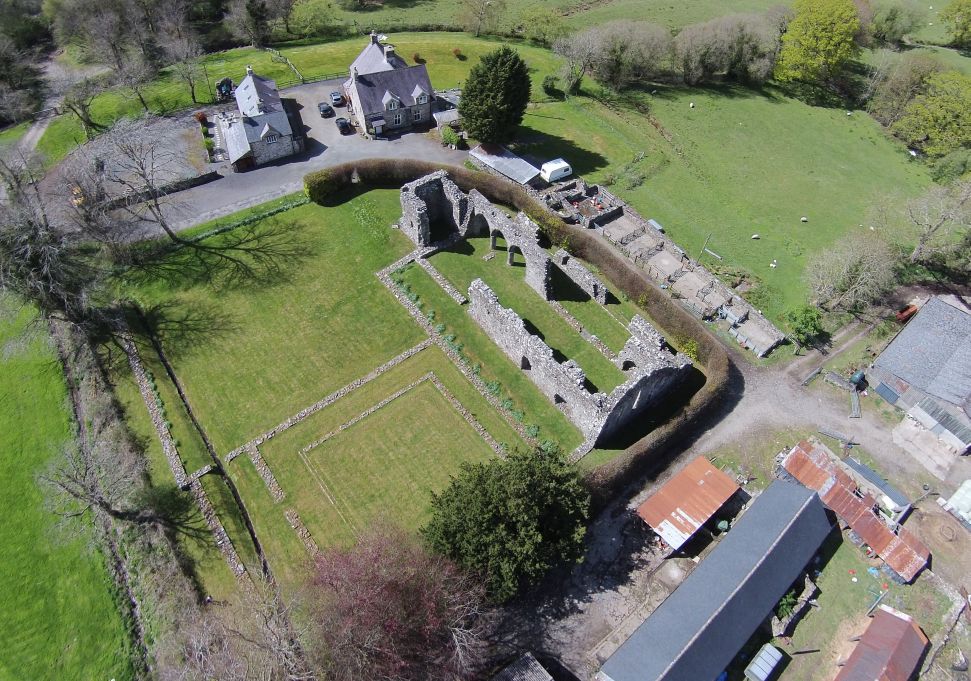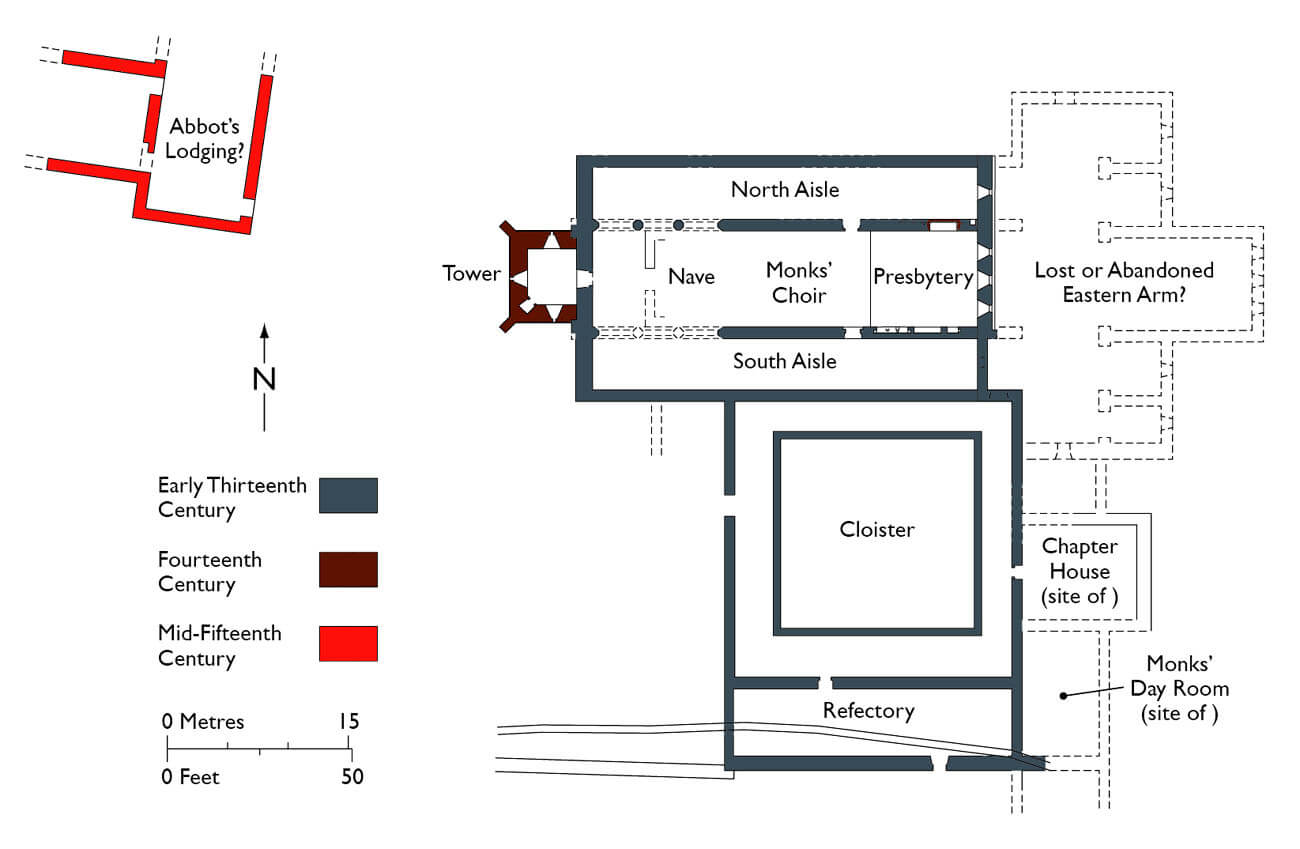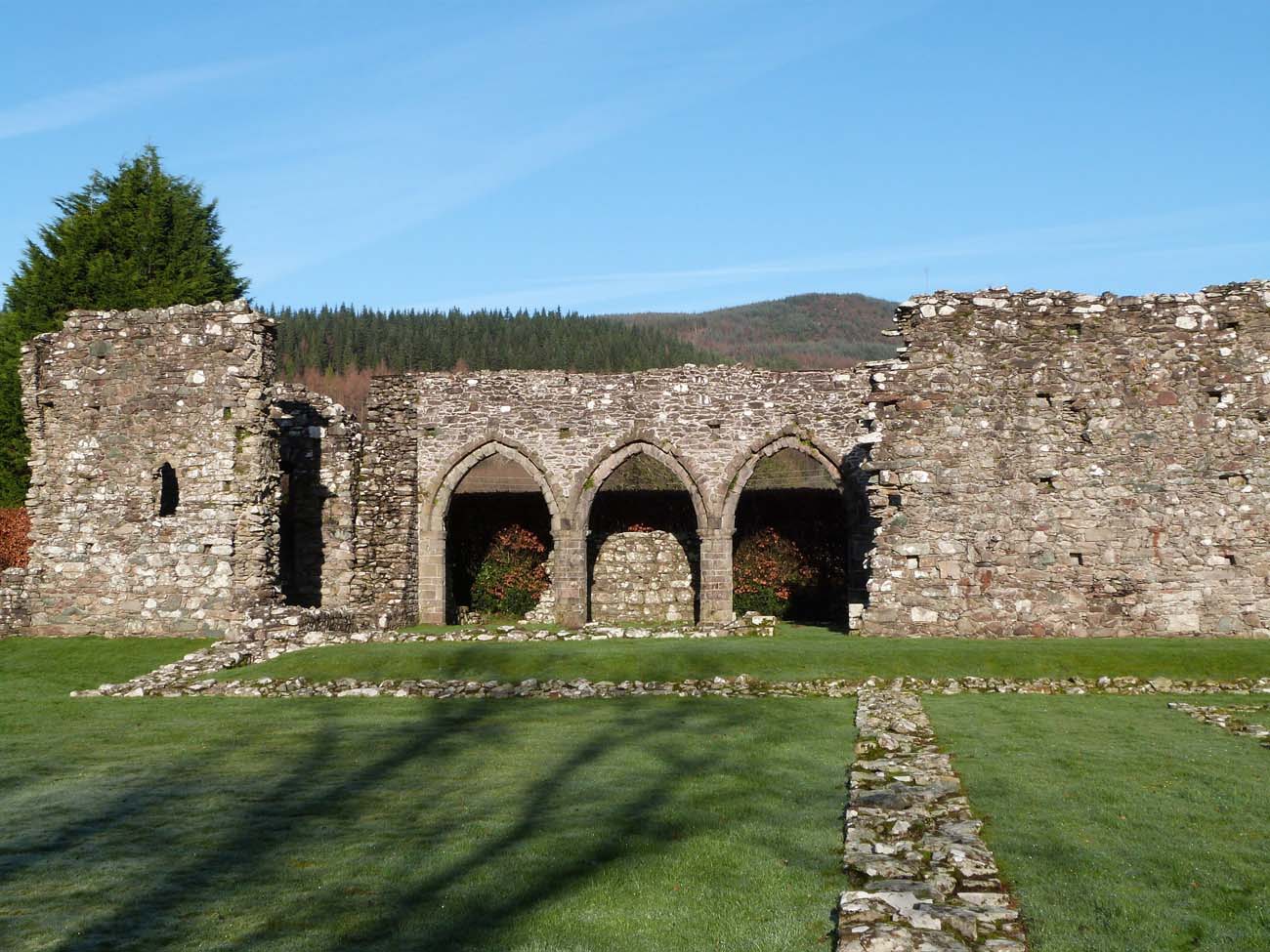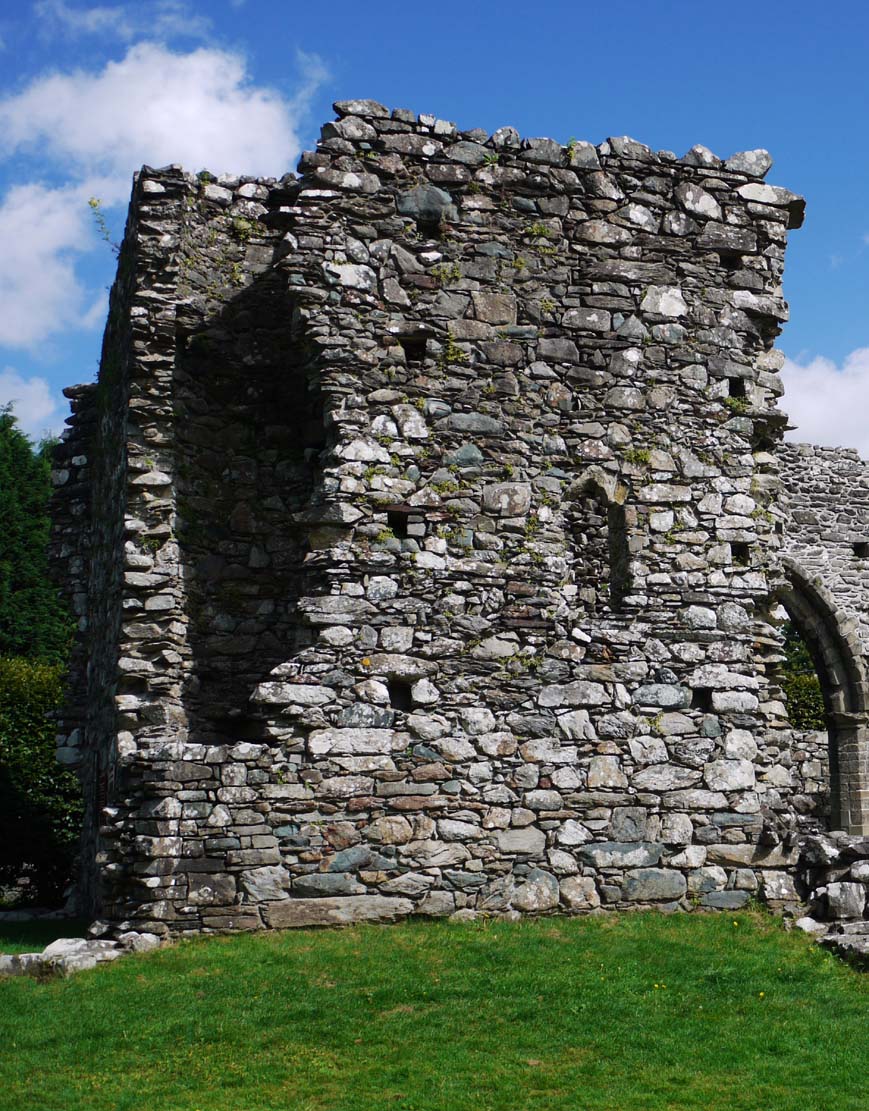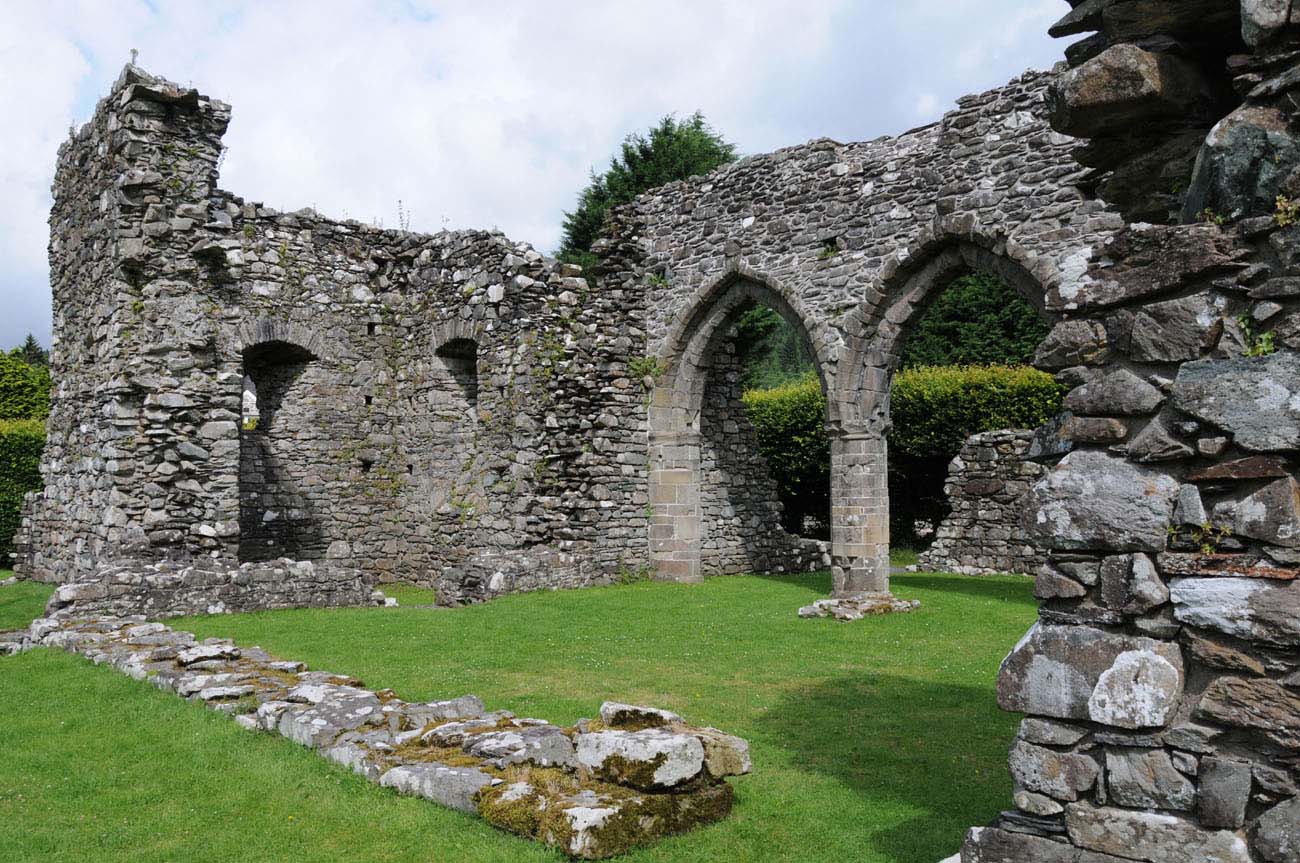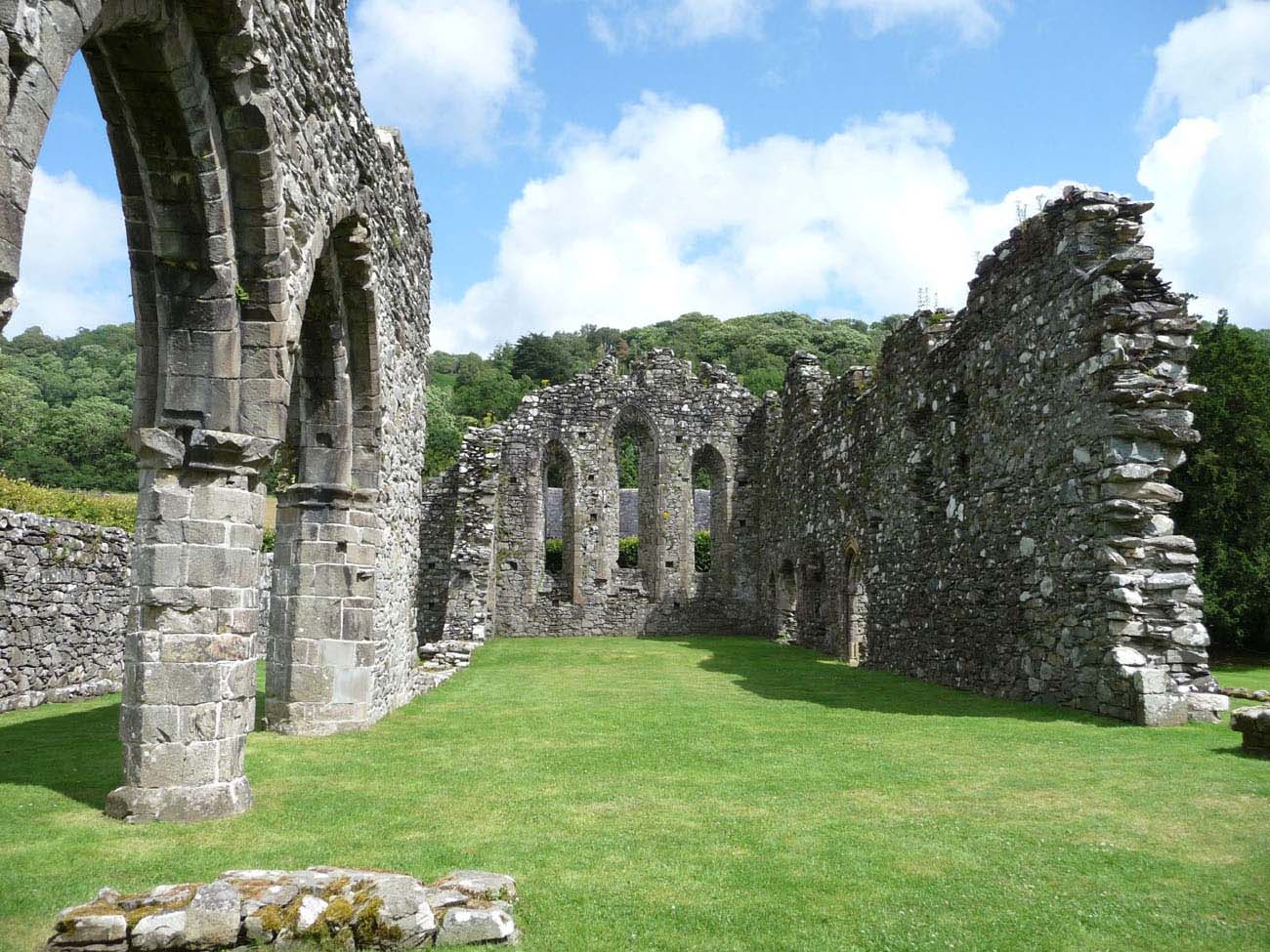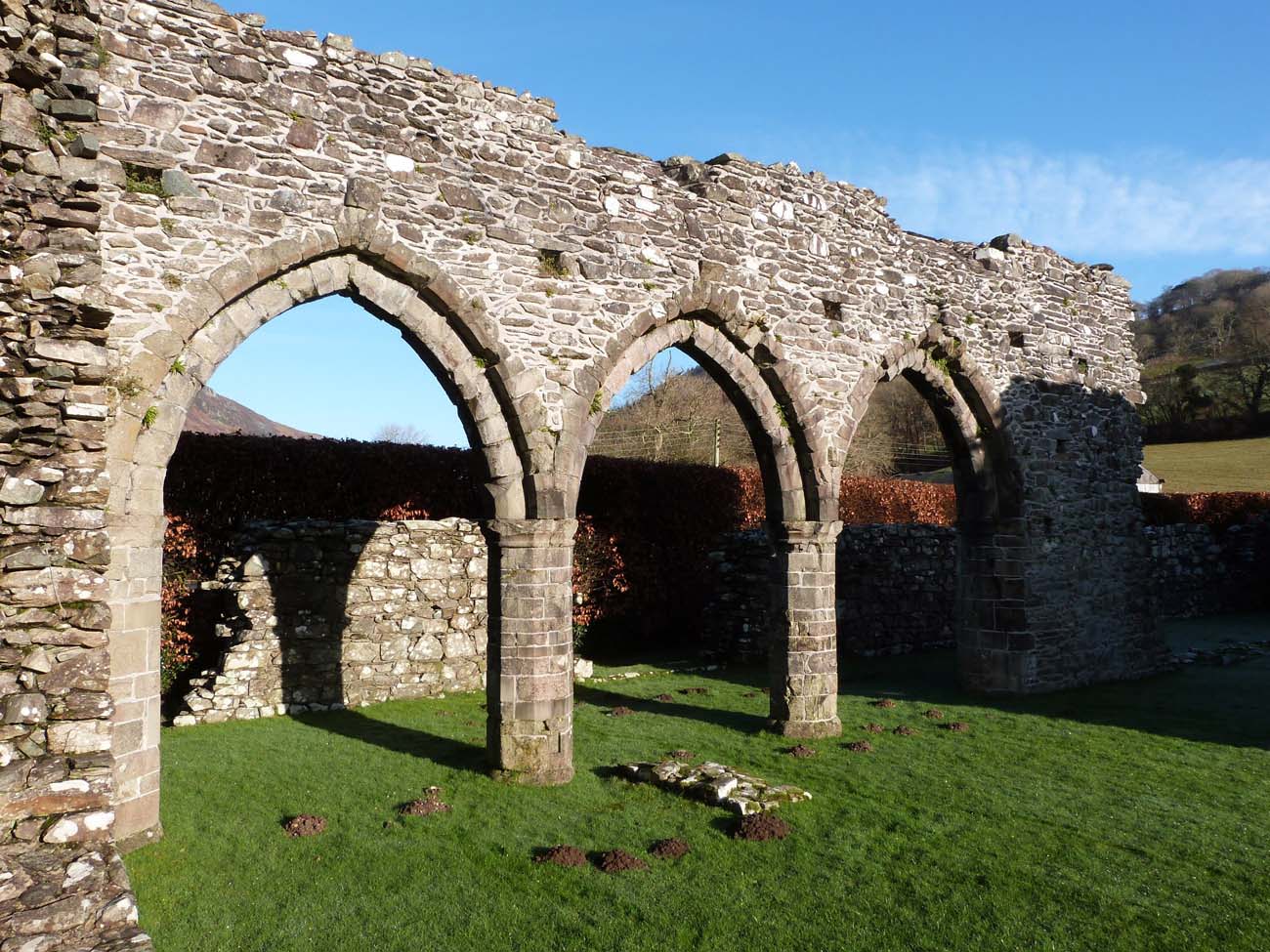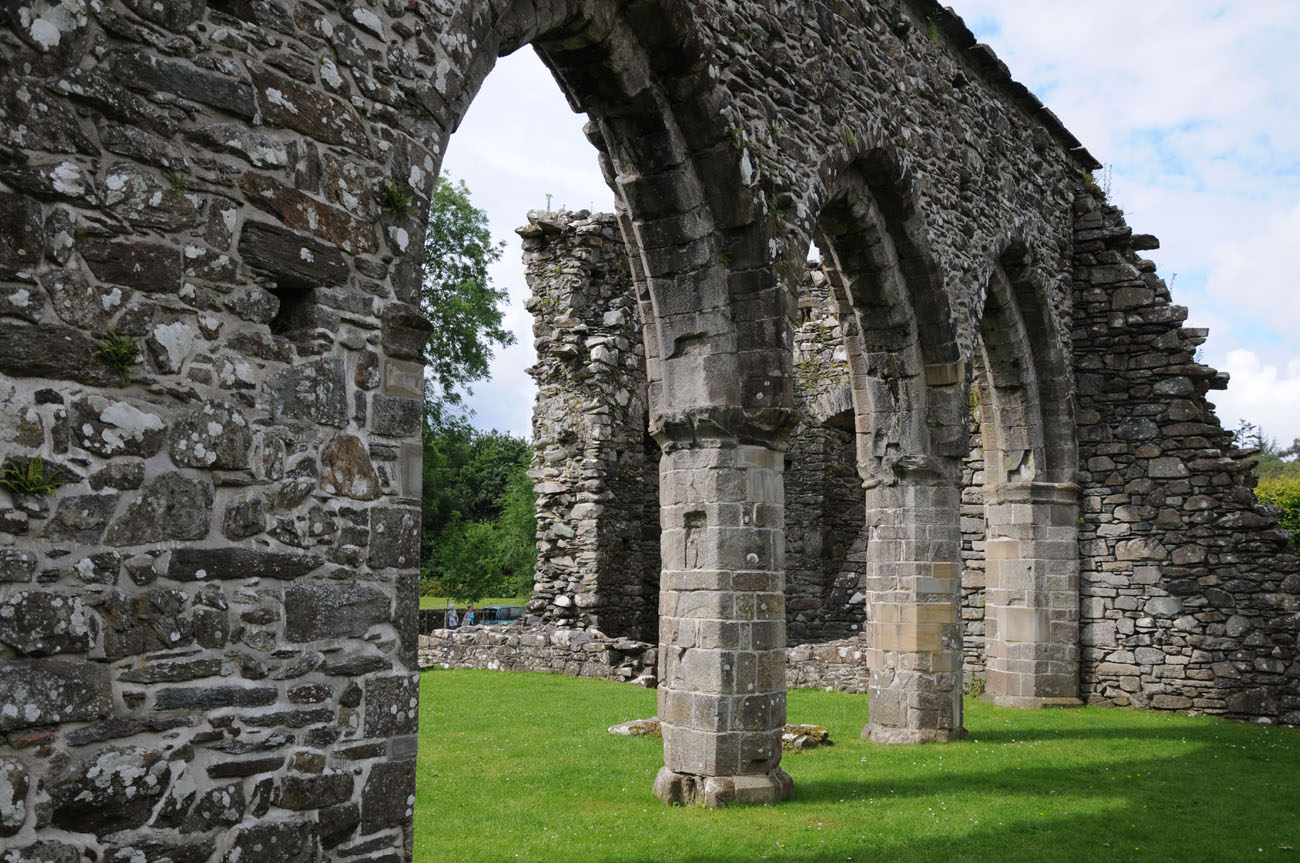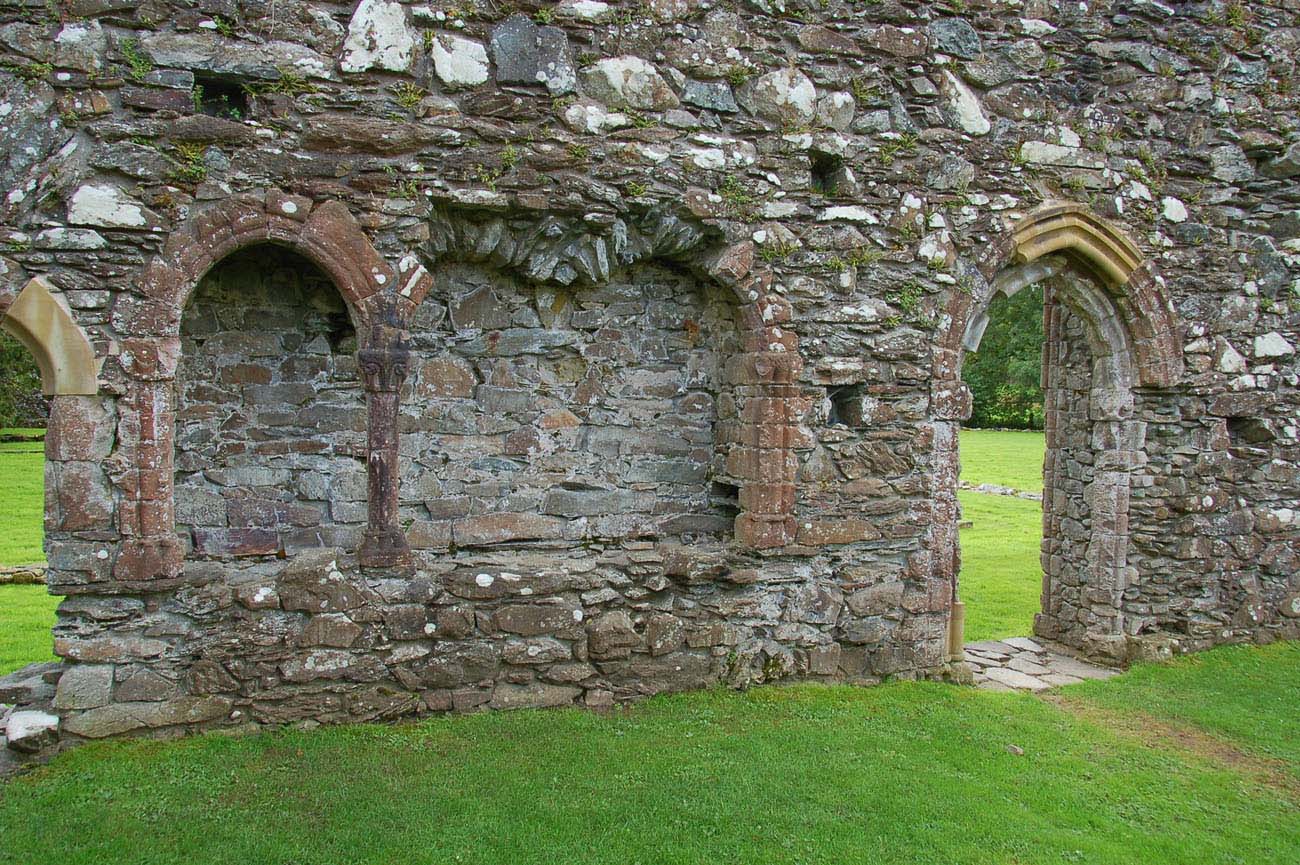History
Cistercian Cymer Abbey in Llanelltyd was founded in 1198-1199, under the patronage of Maredudd ap Cynan ab Owain Gwynedd, ruler of Merioneth, and his brother, Gruffudd ap Cynan, prince of North Wales. Like other Cistercian convents in Wales, sheep and horses were bred in Cymer, delivered to the court of Llywelyn ap Iorwerth. The trade was facilitated by easy access to the sea, and the income increased the benefits derived from the two nearby rivers. In 1209, Llywelyn additionally granted the abbey mining charter, but despite this, the convent did not prosper, lacked arable land and had limited rights to fish.
Cymer was the base for the units of prince Llywelyn ap Gruffudd in 1275 and 1279. In 1283, king Edward I took over the abbey, and a year later he gave it compensation in the amount of 80 pounds for damages caused in recent wars. Until 1388, the poor monastery was home to no more than five monks, and it seems that there has been a marked decline in religious standards.
In 1443, John ap Rhys left office at Cymer and appeared as an abbot in Strata Florida Abbey. In his place a John Cobbe was chosen, but Rhys did not think to give up Cymer and banished his successor. This led to the takeing of the convent and his new abbot Richard Kirby under royal custody. Once again, the monarch’s supervision was necessary in 1453. During this period, the abbey’s income was valued at a very small amount of £ 15 of annual income.
Despite the royal interventions, disputes over the appointment of the abbot’s office continued at the end of the 15th century. In 1487, there was even excommunication by the general chapter of one of the monks, William, because of his self-proclaimed election. Despite this, in 1491 he was again mentioned in the docuents as abbot of Cymer. Lewis ap Thomas was the last superior of the monastery since 1517. Shortly afterwards, the convent was dissolved as a result of the edict of Henry VIII, which canceled all monasteries with an income of less than £ 200. Cymer was only making £ 51 a year at the time of dissolution.
Architecture
The monastery was erected on the east bank of the Mawddach River, right at the mouth of the River Wnion to Mawddach Cymer. It consisted of the abbey church, the monk’s enclosure adjacent to its southern side, and the abbot’s house located at a certain distance on the west side.
The abbey church was a basilica building (central nave and two aisles) on the plan of an elongated rectangle, without an externally separated chancel, ended with a straight wall from the east. Probably the original church design has never been completed; the northern and southern transepts were not implemented, and the chancel was to be located further to the east. From the west side, in the fourteenth century, the tower was erected, while the construction of the central tower, typical for Cistercian churches, was abandoned.
The interior of the church was created in a very unusual way due to the abandonment of the construction of the eastern part of the building and closing the whole with a straight wall at the height of all aisles and central nave (which forced the choir and presbytery to house in the part of the building to be originally only the nave). The western part of the church, intended for lay people, was divided into aisles with two rows of three pointed and moulded arcades, based on octagonal pillars. Behind them, further to the east, a choir of monks began, separated by full walls of the central nave, pierced only by clerestory windows. The monks’ stalls were probably placed along them, and from the west the entrance was separated by a timber rood screen. The eastern part of the central nave was occupied by the chancel with the main altar, accessible by two portals (from the north and south) from the aisles. The latter were, therefore, as if completely separate routes, opened to the rest of the church only in three western bays.
To the eastern part of the south aisle was a square garth, with sides of 22 and 23 meters surrounded by cloisters and monastery buildings. In the eastern wing, according to the Cistercian rule, there was a chapter house, and in the southern range refectory, although its longer axis in this case was quite unusual, because it was based on the east-west line, not north-south. At the corner of the refectory, and the southern end of the east wing, there were latrines, flushed with a nearby stream. They were directly connected to the bedroom – the dormitory on the east wing upper floor. As the abbey was poor and the number of monks was insignificant, the west wing was limited only to the small entrance vestibule connected directly to the cloister. On the west side, a bit out of the way, there was an abbot’s house and a economic building.
Current state
To this day, fragments of the church with the lower part of the western tower, fragments of the walls of the nave and chancel and inter-nave pillars have survived. Only the foundations are visible of the monastic buildings and cloisters. The abbot’s house and the western farm building have survived, but have been thoroughly rebuilt. The abbey is currently under the care of the Cadw government agency and is open to visitors from April 1 to October 31, daily from 10.00 to 17.00.
bibliography:
Burton J., Stöber K., Abbeys and Priories of Medieval Wales, Chippenham 2015.
Harrison S., Robinson D.M., Cistercian Cloisters in England and Wales Part I: Essay, “Journal of the British Archaeological Association”, 159 (2006).
Salter M., Abbeys, priories and cathedrals od Wales, Malvern 2012.
The Royal Commission on The Ancient and Historical Monuments and Constructions in Wales and Monmouthshire. An Inventory of the Ancient Monuments in Wales and Monmouthshire. County of Merioneth, London 1921.

